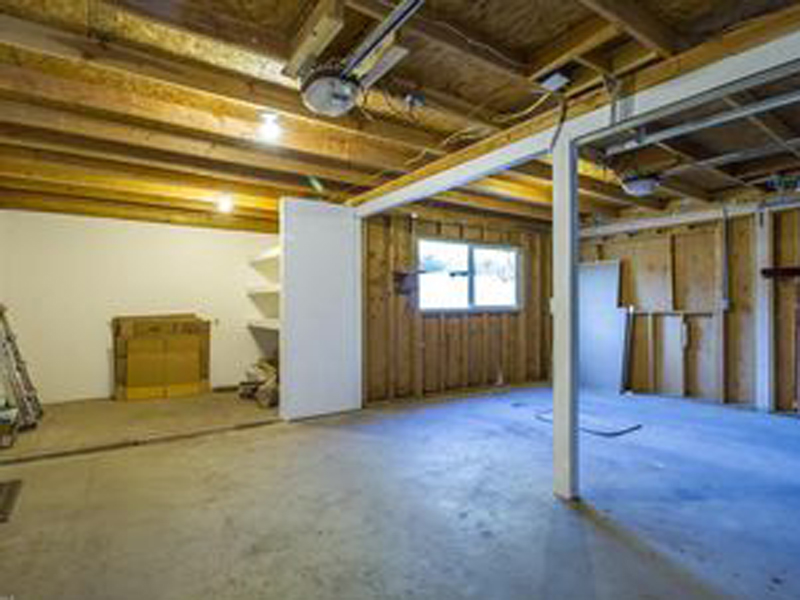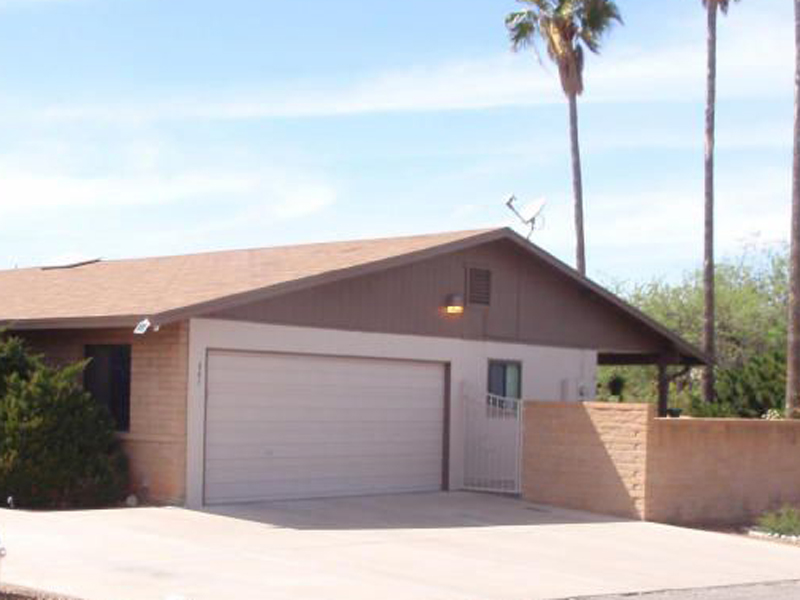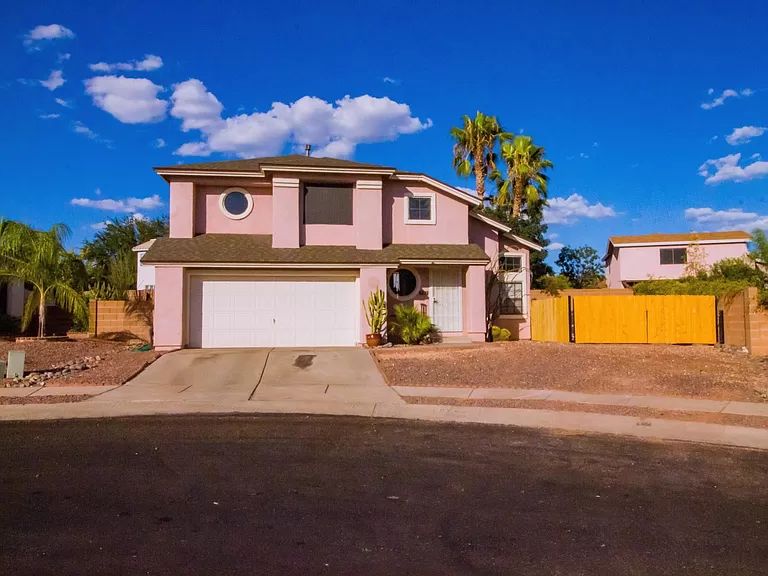Garage Door Will Not Open - Total Troubleshooting Guide
Is Your Garage Door Stuck? Here's What to Do Very first
When your garage door will not open, begin with these essential security checks before trying any fixings. First, make certain no person is standing near the door and that vehicles are clear of the opening. Search for apparent indications of damage like broken panels, curved tracks, or hanging cords. If you see a snapped spring or severely harmed elements, stop instantly and call a professional—-- these repair work require specific tools and proficiency to deal with safely.

Inspect These 6 Things Prior To Calling a Specialist
Prior to presuming you need pricey repairs, run through this fast diagnostic checklist that solves most garage door troubles:
-
Power source: Validate the opener is plugged in and the outlet is working
-
Remote batteries: Change dead batteries in your remote
-
Manual lock: Examine if a person accidentally engaged the hand-operated lock
-
Blockages: Seek particles obstructing the door's path or sensing units
-
Emergency release: Make certain the red emergency situation cord hasn't been drawn
-
Circuit breaker: Validate the garage circuit hasn't stumbled
These easy checks fix approximately 70% of garage door concerns without requiring specialist treatment.
10 Typical Factors Your Garage Door Won't Open
Understanding why your garage door opener isn't working aids you choose the appropriate service. Here are the most regular reasons home owners experience:
Dead remote batteries represent the easiest repair—-- when batteries die, the remote can't send signals to the opener. Power failures or stumbled breakers cut electrical power to the motor. Broken springtimes protect against the door from lifting effectively and need instant expert focus. Sensor imbalance reasons safety systems to block door operation. Track blockages quit rollers from relocating smoothly. Motor overload triggers automated shutoffs when the opener spots resistance. Limit switch issues confuse the opener about door position. Cable television damages interrupts the lifting device. Weather-related concerns influence door motion during severe temperature levels. Component wear from age slowly minimizes system performance.
Issue # 1: Dead Push-button Control Batteries
When your wall switch works yet your remote does not, dead batteries are generally the culprit. Most garage door remotes use either 3-volt lithium or 12-volt alkaline batteries. Eliminate the back cover of your remote and inspect the battery kind. Change with fresh batteries and check the remote. If it still does not work, you may need to reprogram it to your opener. Consult your opener's manual for specific reprogramming instructions, as the procedure varies by supplier.
Problem # 2: Power Supply Issues
Garage door power problems usually originate from loose connections or stumbled circuits. Examine that the opener is securely linked into its outlet—-- vibration can loosen connections with time. Examine the outlet with an additional tool to confirm it's working. Analyze your home's breaker box for tripped circuits, particularly if you have actually experienced tornados or power changes. GFCI electrical outlets might have stumbled and need resetting. If the opener has power but will not react, the issue most likely lies in other places in the system.
Issue # 3: Broken or Damaged Springs
Damaged garage door springs are among the most harmful parts to handle. If you listen to a loud bang from your garage or notice the door really feels incredibly heavy when attempting to raise by hand, a springtime has actually most likely broken. Torsion springtimes run horizontally above the door, while expansion springs rest on either side. Never ever try spring repair work on your own—-- these parts save remarkable stress that can create major injury or fatality. Specialist replacement normally costs $150-$300 but ensures your security.
Issue # 4: Blocked Security Sensing Units
Modern garage doors feature safety and security sensing units that protect against closure when objects are detected. These sensing units can quit the door from opening up if they're unclean, misaligned, or obstructed by debris. Clean sensor lenses with a soft cloth and make certain nothing obstructs the undetectable beam between them. Inspect that sensors are correctly aligned—-- the majority of have indication lights that show connection standing. Sensing unit issues often fix with basic cleaning and adjustment.
Problem # 5: Track Obstructions or Damage
Garage door tracks guide rollers as the door moves up and down. Dust, particles, old oil, or little objects can jam the system. Examine tracks visually and get rid of any type of blockages with a brush or towel. Look for dents, flexes, or bending that can impede smooth operation. Minor track adjustments are feasible for convenient home owners, but considerable damage calls for specialist repair work to prevent additional issues or safety and security threats.
Trouble # 6: Garage Door Opener Electric Motor Issues
When the garage door motor runs but the door does not relocate, a number of concerns could be liable. The electric motor may be overwhelmed and shutting down as a safety measure. Gear wear, especially in older devices, can stop correct procedure. Chain or belt drive problems influence power transmission. If you hear uncommon grinding, clicking, or humming audios, stop using the opener promptly. Motor repair work typically set you back more than substitute, particularly for devices over 10 years old.
Detailed Do It Yourself Troubleshooting Guide
Follow this systematic method to garage door fixing while focusing on security throughout the process:
Action 1: Check the wall button initially. If it works but the remote does not, focus on remote concerns. If neither jobs, inspect power supply.
Step 2: Analyze the manual release cord. If it's been drawn, the opener is disengaged from the door. Press the trolley back to reconnect.
Action 3: By hand check the door by disengaging the opener and attempting to raise the door by hand. It ought to move smoothly and remain in place when half-open.
Step 4: Examine visible parts for damages, paying special attention to springtimes, cables, and tracks.
Tip 5: Inspect all safety and security attributes including sensors, restriction switches, and auto-reverse functions.
Step 6: Test various controls (remote, wall surface switch, keypad) to separate the issue resource.
Constantly put on shatterproof glass and work gloves when carrying out inspections, and never effort fixings on springs or high-tension elements.
When to Call an Expert vs. DIY Solutions

Knowing when to call a garage door specialist versus attempting do it yourself fixings safeguards both your safety and security and your pocketbook. Handle these problems yourself: dead remote batteries, power supply issues, small track cleaning, sensor cleansing and alignment, and standard lubrication.
Never attempt these repair services on your own: springtime substitute or change, cable fixings, significant track adjustment, electrical circuitry problems, opener electric motor substitute, or any type of repair including high-tension elements. Specialist service technicians have specialized tools, training, and insurance policy to manage dangerous fixings safely.
Take into consideration repair work expenses versus replacement costs, especially for doors over 15 years of ages. Modern garage doors provide much better safety and security features, power efficiency, and reliability than older versions.
Emergency Garage Door Solutions
When you're stuck to a garage door that will not open up and need immediate gain access to, comply with these emergency situation procedures:
Manual Operation: Pull the red emergency situation release cord to disengage the opener. This allows manual procedure yet needs proper method to avoid injury. Raise the door slowly and uniformly, utilizing leg muscle mass as opposed to your back. A lot of property doors weigh 100-150 pounds, making them convenient for most grownups.
Momentary Solutions: If the door opens up by hand but won't keep up, prop it open with sawhorses or clamps—-- never utilize your body or vehicles as supports. For doors that won't shut entirely, make sure the opening is safeguarded if you need to leave.
Emergency situation Solution: Numerous garage door companies use 24/7 emergency service for situations entailing safety problems, entraped cars, or complete system failings. While much more expensive than routine solution phone calls, emergency situation repair services offer instant solutions when needed most.
Safety Caution: What NOT to Do
Garage door security calls for understanding dangerous repairs that need to never ever be attempted by home owners:
Never try to repair springs—-- they save enough power to trigger deadly injuries when they break or are poorly dealt with. Don't force a stuck door—-- this can damage the opener, tracks, or door panels, producing more costly problems. Prevent bypassing safety and security features—-- sensing units and auto-reverse mechanisms protect against significant injuries and building damages.
Don't overlook strange sounds—-- grinding, scuffing, or banging audios show troubles that get worse with time. Never make use of the door if cables are torn or broken—-- the door might drop unexpectedly. Do not attempt electric repairs unless you're a certified electrical expert—-- garage door openers use both 120V household current and low-voltage control circuits.

Precautionary Upkeep to Stay Clear Of Future Issues
Normal garage door upkeep avoids most usual problems and extends system lifespan substantially:
Regular monthly Tasks: Visual examination of all parts, checking auto-reverse safety functions, examining and tightening hardware, and cleansing tracks and sensors.
Quarterly Jobs: Lubricating all moving parts with ideal garage door lubricant, testing guidebook procedure, and examining climate sealing.
Yearly Tasks: Professional assessment and tune-up, spring adjustment if required, and opener maintenance consisting of belt or chain adjustment.
Seasonal Tasks: Planning for climate extremes, inspecting insulation, and changing opener settings for temperature changes.
Constant upkeep prices much less than emergency repair services and makes sure reliable operation year-round.
Garage Door Will Not Open Up FAQs
Why won't my garage door open with the remote however collaborates with the wall switch?
This typically suggests dead remote batteries, signal disturbance, or the requirement to reprogram the remote. Inspect batteries first, then consult your opener guidebook for reprogramming directions.
Can I manually open my garage door if the power is out?
Yes, pull the red emergency launch cable to disengage the opener, after that lift best way to secure a garage door after damage the door manually. Be planned for the door's complete weight and lift with correct technique to prevent injury.
How do I understand if my garage door springtime is broken?
Indicators consist of a loud bang from the garage, the door sensation incredibly hefty when lifting manually, visible spaces in the spring coils, or the door just opening a few inches before stopping.
Is it safe to utilize my garage door if it won't open all the way?
No, partial operation indicates mechanical issues that can intensify all of a sudden. Stop using the door and have it inspected by a professional to stop further damages or injury.
What should I do if my garage door opens yet won't close?
Examine security sensing units for blockages or misalignment, analyze the tracks for debris, and check the auto-reverse feature. If these do not address the problem, seek advice from a specialist.
How much does it cost to deal with a garage door that will not open up?
Prices differ extensively depending on the problem: battery substitute ($5-$10), specialist medical diagnosis ($50-$100), springtime replacement ($150-$300), or opener substitute ($200-$500).
Can weather impact my garage door's ability to open?
Yes, severe cold can thicken lubricating substances and affect metal parts, while heat can trigger development problems. The majority of issues solve as temperature levels normalize, yet relentless concerns may require professional focus.
Why does my garage door open a few inches after that stop?
This generally shows damaged springtimes, limit button problems, or track blockages. The opener's security attributes quit operation when resistance is spotted, avoiding damages to the electric motor or door.
Obtain Expert Aid for Complex Problems
When DIY fixing doesn't solve your garage door troubles, professional technicians supply the expertise and tools needed for safe, long lasting repairs. Qualified specialists detect concerns precisely, make use of manufacturer-approved components, and provide guarantees on their job.
Expert solutions consist of: detailed system assessments, spring and cord substitute, opener repair and substitute, track alignment and substitute, electric troubleshooting, and emergency situation service calls.
What to expect: upfront prices, certified and insured service technicians, same-day solution for lots of repairs, and follow-up upkeep recommendations.
Many garage door firms provide complimentary estimates for significant repair work and can provide instant solutions for urgent problems influencing home security or vehicle gain access to.
Obtaining Your Garage Door Working Again
A garage door that will not open up does not need to spoil your day or break your budget. Start with easy troubleshooting steps like inspecting power, changing batteries, and analyzing for noticeable blockages. Many issues have fast DIY options that recover regular procedure within minutes.
However, recognize when specialist aid is needed—-- particularly for spring-related problems, electrical problems, or complicated mechanical failures. Trying dangerous repair work on your own runs the risk of major injury and often creates a lot more pricey issues.
Normal maintenance prevents most garage door problems and ensures trustworthy procedure for years to come. When troubles do happen, resolve them without delay to avoid more pricey repair work and maintain your home's safety and security and benefit. Whether you require a basic battery substitute or total system overhaul, solutions exist to obtain your garage door working efficiently again.